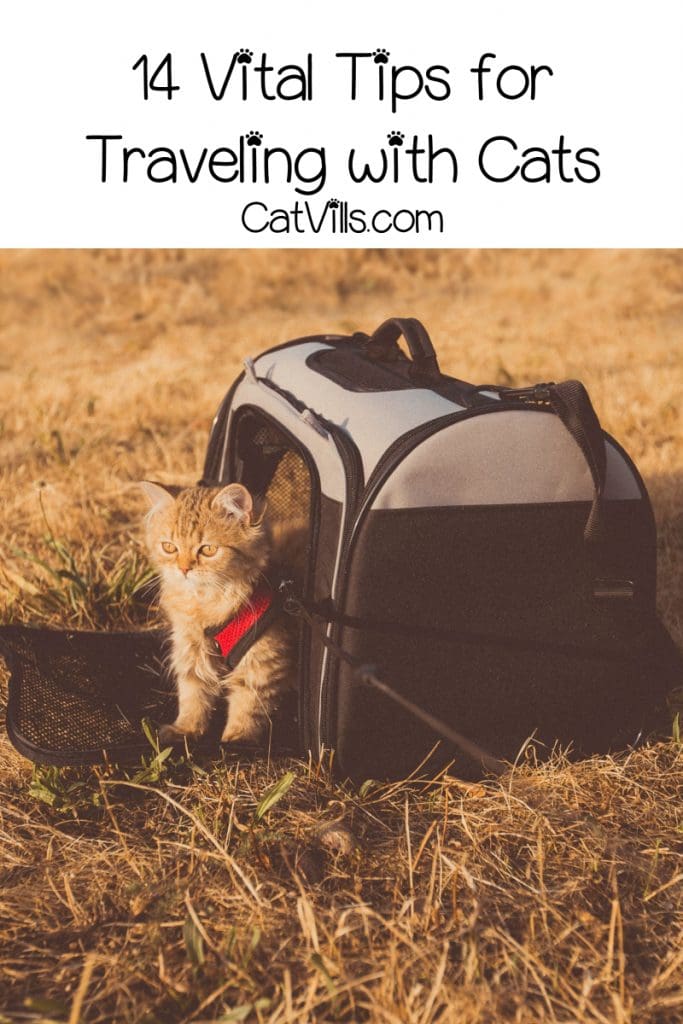Last Updated: 1 month ago
If you’re planning on traveling with cats, you’ll definitely want to check out my tips to make the trip a whole lot smoother.
Whether you’re hopping on a plane for a quick flight down the coast or planning a cross-country road trip, I’ve got you covered!
After all, traveling with cats requires a bit more planning and consideration than traveling alone or with kids.
The following tips will help you understand how to travel with a cat and keep both you and your kitty safer and happier on the journey!
14 Tips on How to Travel with a Cat
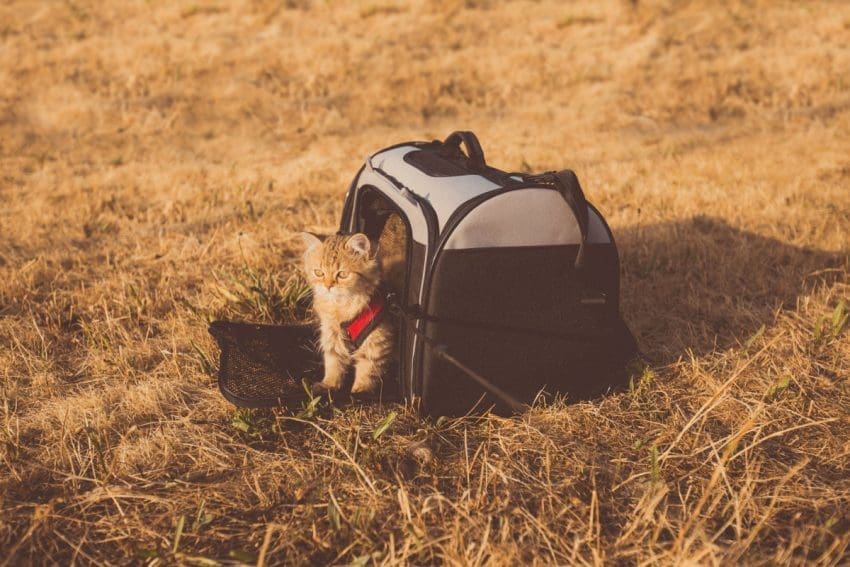
A safe and happy journey with cats begins before you even hit the road (or the skies, as the case may be).
Ideally, start your preparations well ahead of time so you can adjust your plan as needed.
For example, it’s a lot better to find out that kitty can escape his carrier in the safety of your own home than while he’s thousands of feet up in the air tucked away inside a cargo hold or a crowded cabin!
Read on for everything you need to know to keep your cat safe and healthy during your travels, broken down into general tips as well as those specific to plane or car travel.
General Tips for Traveling with Cats
1. Microchip your cat

If you haven’t already done so, now is the time to microchip your cat. Even the most cautious cat owners can be bested by a Houdini.
It’s bad enough when cats escape out the front door of our own homes, but at least your cat knows the way back.
If he escapes out of the car or your motel door, a microchip significantly increases his chances of making it back to you.
2. Get him used to the crate
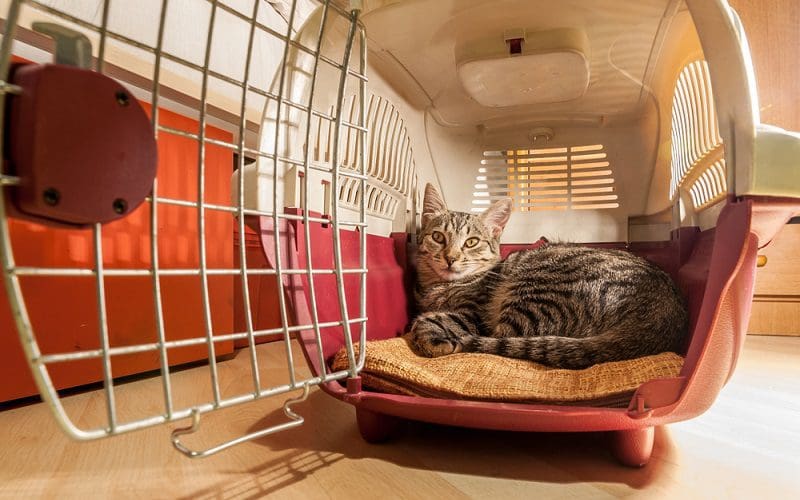
Even if you take your cat to the vet in a crate, you’ll want him to get acclimated to it for a longer journey.
Sure, you could drive around town for hours with kitty in the back seat, but who has time (or the extra gas money) for that?
Instead, make the crate a comfy and inviting place to hang out right in your own home.
- Try spritzing some cat nip spray on a cozy blanket and placing it inside the crate.
- For now, leave the door open so he can come and go.
- As you get closer to your departure date, start closing the door for increasing amounts of time, and reward your cat after each interval.
- For example, start with five minutes, then open the door and give your cat his favorite treat (catnip is a great low-cal option).
- On the next day, do it for ten minutes, then twenty, and so on up to about an hour.
- That should be sufficient enough to teach him that the crate is a happy and rewarding place to relax.
3. Get him used to a harness and leash
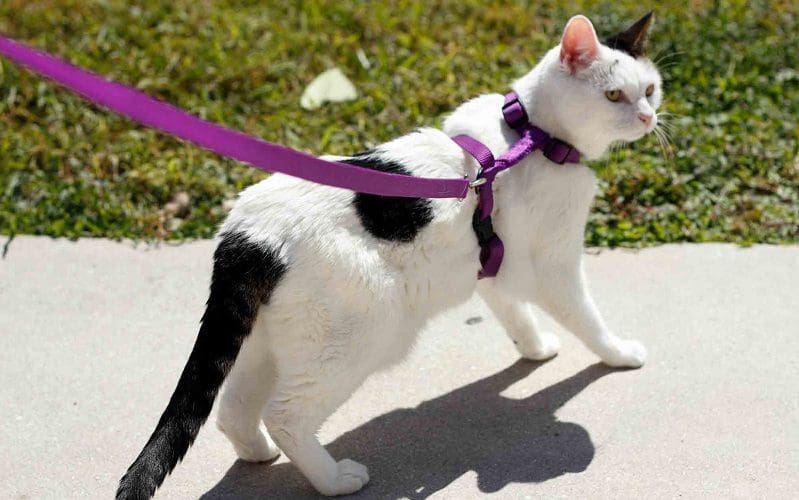
If you’re planning a long road trip that doesn’t include hotel stays (in other words, driving straight through), you may want to consider getting your cat used to a harness and leash so he can stretch his legs at pit stops.
Put a harness on your cat, then keep reading for tips on acclimating him to it.
As with the crate, you’ll want to start with short intervals and work your way up.
- Put the harness on first for a few minutes, then reward him.
- Do this for a couple of days, then add in the leash and reward him.
- Work your way up to short walks in your yard.
Keep in mind, though, that some cats just plain don’t like leashes and will never stop resisting.
If that’s the case, don’t force it. Just find other ways along the ride to let him stretch his legs (like stopping at a rest stop with a large family bathroom).
4. Keep him updated on his vaccines
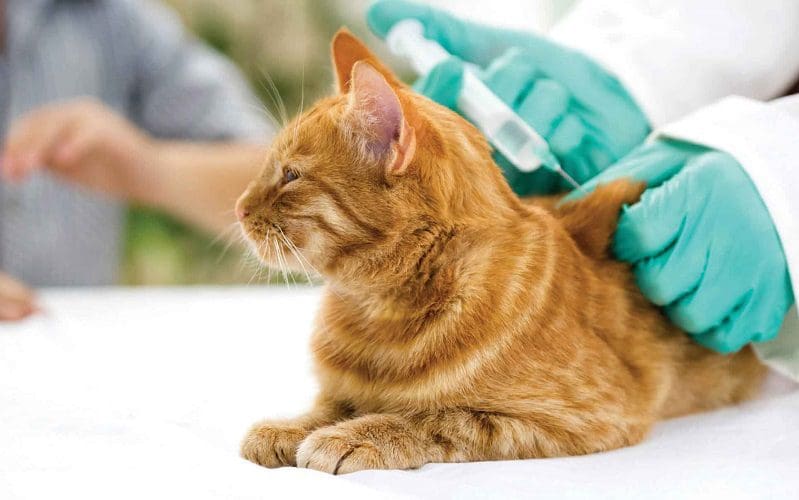
If your cat is traveling by plane, then you’ll almost certainly have to show proof of vaccinations.
Even if you’re traveling by car, it’s a good idea to make sure he’s up-to-date.
You’ll also want to think about your destination and ask your vet about any additional vaccines.
For example, if you’re traveling to an area with a high incidence of Lyme’s Disease in cats, you may want to get him vaccinated against it.
Even if he’ll be staying indoors the entire time, ticks can ride in on your clothes.
While you’re there, ask for a copy of your cat’s major medical records as well as recommendations for emergency clinics at your destination.
If your vet doesn’t have any, go online and do a quick search, then jot down a few clinics both at your destination and along the way.
Traveling Safely by Plane with a Cat
All of the horror stories about cats getting lost, hurt, or worse during plane rides are enough to make any cat owner say, “Forget it, I’ll just drive!”
Unfortunately, that’s not always feasible. The somewhat good news? Only about 1 out of 20,000 pets die on planes.
That’s also the bad news, because it doesn’t matter if it’s one in a million when it happens to your pet.
While you’re putting your cat’s life in someone else’s hands the moment you check in for your flight, there are a few things you can do to help ensure his safety.
1. Check the airline’s pet safety records
Before you even book your flight, look up the airline’s pet safety records.
Search “how many pets die on X airline?” replacing the X with your chosen airline, of course.
2. Ask about in-cabin flights for your cat
If at all possible, book a flight that allows you to keep your cat in the cabin with you.
However, DO NOT fly an airline that makes you put them in the overhead compartment.
Although it sounds like common sense, one airline recently made headlines after a dog died in their overhead bin.
FYI, in-cabin flights are an absolute must for cats with flat noses, like Persians.
3. Make sure your carrier meets the requirements
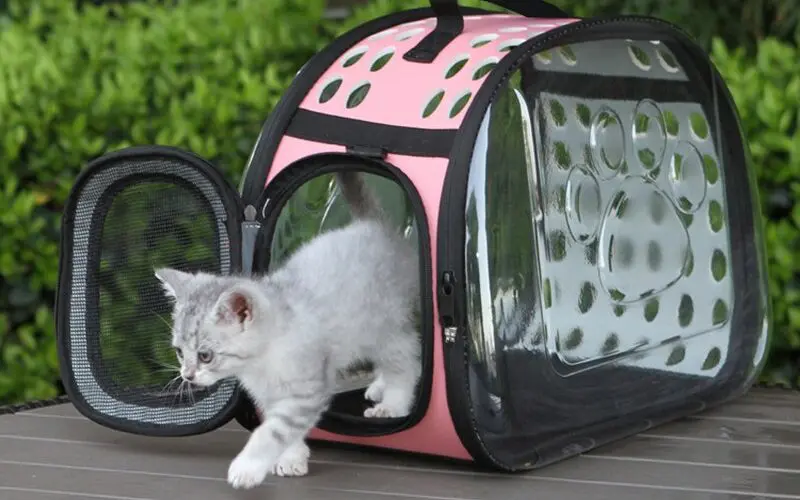
Airlines have different policies in regard to carriers, so ask ahead of time and buy a new one if necessary.
For the most part, airlines require soft carriers versus hard ones.
In fact, some brands make special “air carriers” for cats that are definitely worth looking into.
4. Don’t forget the collar and ID tag
Even if your cat is microchipped, he’ll still need a collar with an ID tag that contains all your pertinent information.
Make sure you include your name, your cat’s name, and your cell number on it.
Label your cat’s carrier with the same information, along with additional contact numbers or addresses at your final destination.
5. Don’t feed your cat too close to departure time
Whether he’s flying in the cabin or the cargo hold, you don’t want your poor kitty to have to use the bathroom when he’s 30,000 feet in the air and trapped in a carrier.
Feed him a good 5 hours before the flight and make sure he has a chance to use the litter box before liftoff.
Road Trip Cat Safety Tips
While road trips are, overall, safer for your cat than flying since you’re in total control at all times, you’ll still need to follow some basic safety rules.
1. Don’t let him roam around the car
Whether you’re taking a short trip or a long drive, the carrier is the safest place for your cat.
Letting him roam around the car can lead to tragedy when he inevitably winds up under your feet at the brake pedal.
Even if he stays in the back, you’re more likely to be distracted by checking on him. Plus, if you have to brake suddenly, kitty can go flying and get injured.
Keep in him the crate and make sure it’s secure. Consider a crate with seat belt loops for added safety.
2. Talk to your vet about anxiety or motion sickness treatments
If your cat is prone to motion sickness or extreme car anxiety, talk to your vet about safe solutions.
Some cats feel more secure while wearing a Thundershirt or a similar anxiety vest. Others need stronger treatment options.
3. Plan your pit stops in advance
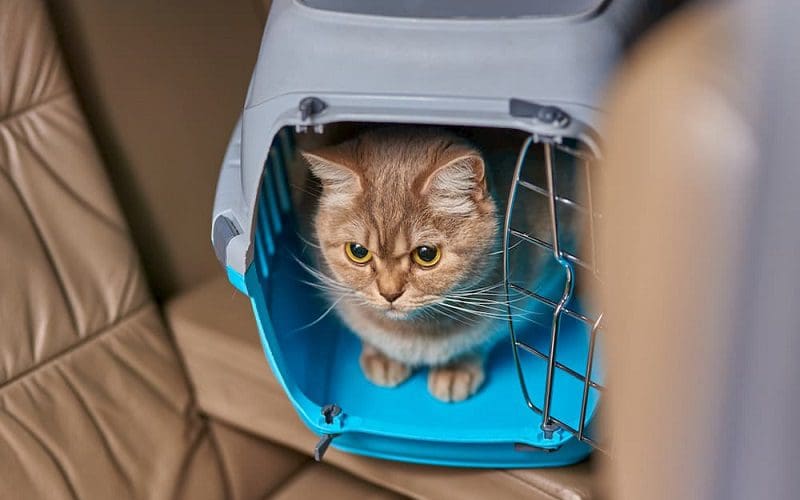
Before you leave, make a list of stops areas where you can take your cat out of the crate and let him use the litter box safely, like rest stops with family restrooms.
Did you know that there are entire websites dedicated to helping you find the best pit stops along your journey?
A couple good ones include:
You can also just search “rest stops with family bathrooms on X,” changing the X to the highways you’ll be traveling. Plan to stop every couple of hours.
4. Make a list of pet-friendly hotels along the way
While you’re making that list of rest stops, look up some pet-friendly hotels along the way, too.
Even if you plan to drive straight through, things come up that make it necessary to stop.
It’s better to plan ahead than to get stuck trying to find a hotel that allows cats when you’re already exhausted or frustrated from dealing with car troubles.
5. Mind the noise in the car
While it’s more or less fine to listen to loud music when you’re in the car alone (although your ear doctor would probably disagree), it can be incredibly overwhelming to sensitive cat ears.
Unless you have passengers in the back seat that need to hear the radio, set the speakers so that they only play upfront and keep the volume at a tolerable level for your cat.
The same goes for the volume of your voice.
Talking at a normal level is fine, but if you’re prone to yelling at other drivers, remember that it can be very jarring for your cat to hear you scream at the top of your lungs.
Wrap-Up
Follow these basic safety rules for traveling with cats and you should both make it to your destination without any major trauma.
Do you have any other tips on how to travel with a cat? Share your thoughts below!
